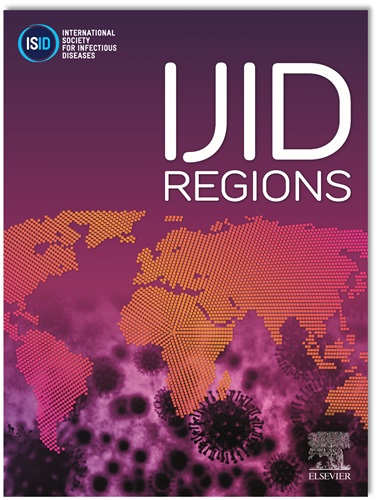Geostatistical modelling of soil-transmitted helminth prevalence in Kenya: Informing targeted interventions to accelerate elimination efforts
IF 4.3
2区 医学
Q1 INFECTIOUS DISEASES
引用次数: 0
Abstract
Objectives
This study estimates the prevalence of soil-transmitted helminths (STH) in Kenya, identifying high- and low-burden communities to optimize intervention strategies.
Methods
Using prevalence data from 146,668 children in 3752 schools across 207 sub-counties in Kenya, collected in 2021 and 2024, alongside environmental and socio-economic data, we modelled the prevalence of hookworm, Ascaris lumbricoides and Trichuris trichiura at a 5 × 5 km resolution. We estimated the probability of exceeding predefined prevalence thresholds (2%, 10% and 20%) and the population-weighted mean prevalence for each species.
Results
Hookworm prevalence was low (mean of 0.6%, 95% credible interval [CI] 0.1%-2.9%), with 6% of sub-counties, primarily in coastal regions, exceeding the 2% threshold. T. trichiura prevalence was higher (mean 1.4%, 95% CI 0.2%-7.3%), with elevated risk in southwestern and coastal regions. A. lumbricoides was highest (mean 2.8%, 95% CI 0.1%-11.6%), clustering in western Kenya. Across all species, the probability of exceeding the 20% prevalence threshold remained below 0.5.
Conclusion
These findings underscore persistent STH transmission in some regions, necessitating region-specific treatment approaches, including strategic decisions on drug selection, target populations and optimized treatment frequency to achieve Kenya’s STH elimination targets.
肯尼亚土壤传播蠕虫流行的地质统计模型:告知有针对性的干预措施以加速消除工作。
目的:本研究估计了肯尼亚土壤传播蠕虫(STH)的流行情况,确定了高负担和低负担社区,以优化干预策略。方法:利用2021年和2024年收集的肯尼亚207个县3752所学校146668名儿童的患病率数据,以及环境和社会经济数据,我们以5 × 5公里的分辨率对钩虫、类蚓蛔虫和毛线虫的患病率进行了建模。我们估计了超过预定义流行阈值(2%,10%和20%)的概率以及每个物种的种群加权平均流行率。结果:钩虫流行率较低(平均0.6%,95%可信区间[CI] 0.1% ~ 2.9%),有6%的县(主要在沿海地区)超过2%的阈值。毛螺旋体患病率较高(平均1.4%,95% CI 0.2%-7.3%),西南和沿海地区风险较高。蚓状拟虫最高(平均2.8%,95% CI 0.1%-11.6%),聚集在肯尼亚西部。在所有物种中,超过20%流行阈值的概率仍然低于0.5。结论:这些发现强调了STH在一些地区的持续传播,需要采取针对特定地区的治疗方法,包括药物选择、目标人群和优化治疗频率的战略决策,以实现肯尼亚消除STH的目标。
本文章由计算机程序翻译,如有差异,请以英文原文为准。
求助全文
约1分钟内获得全文
求助全文
来源期刊
CiteScore
18.90
自引率
2.40%
发文量
1020
审稿时长
30 days
期刊介绍:
International Journal of Infectious Diseases (IJID)
Publisher: International Society for Infectious Diseases
Publication Frequency: Monthly
Type: Peer-reviewed, Open Access
Scope:
Publishes original clinical and laboratory-based research.
Reports clinical trials, reviews, and some case reports.
Focuses on epidemiology, clinical diagnosis, treatment, and control of infectious diseases.
Emphasizes diseases common in under-resourced countries.

 求助内容:
求助内容: 应助结果提醒方式:
应助结果提醒方式:


